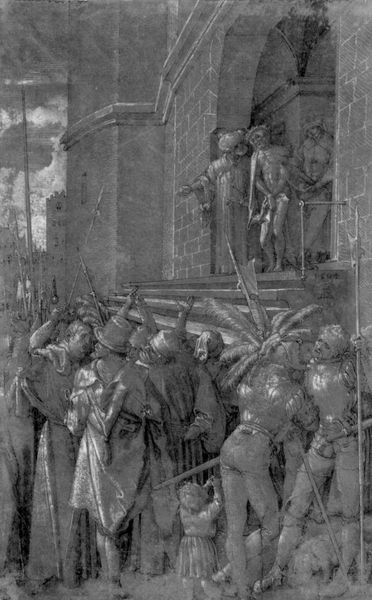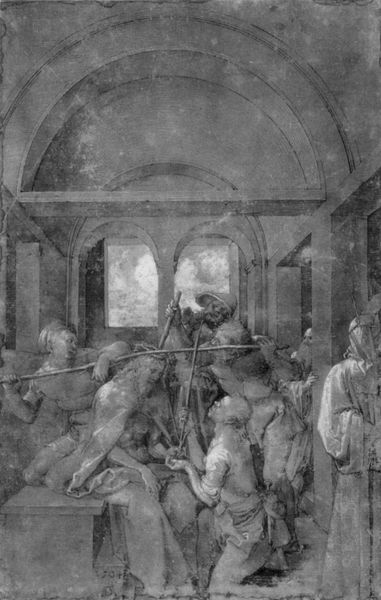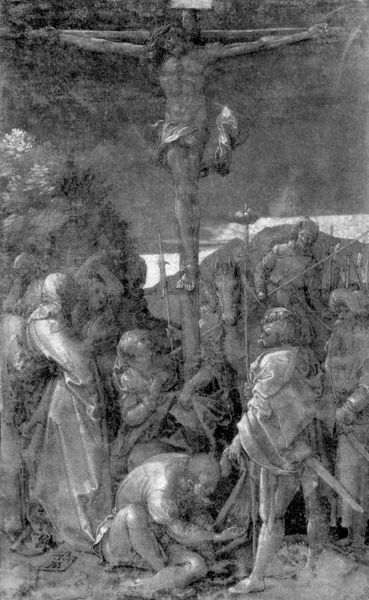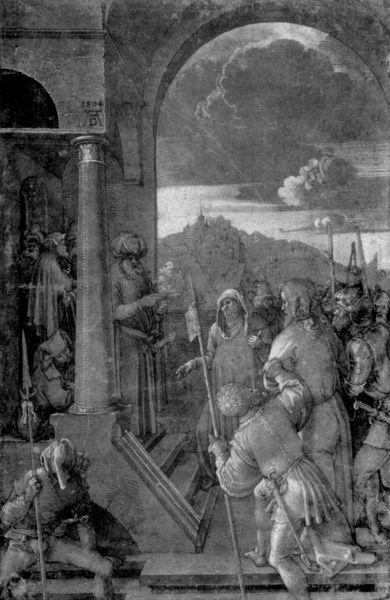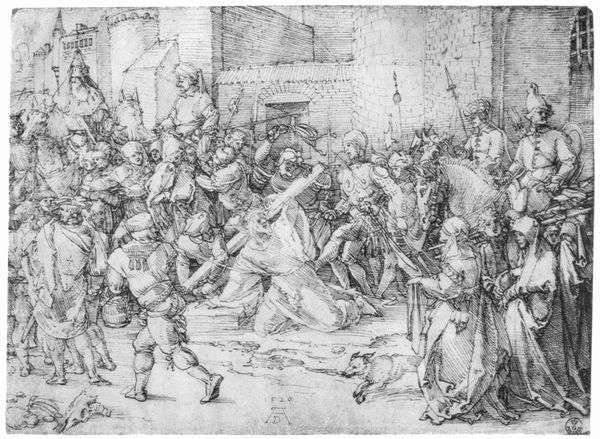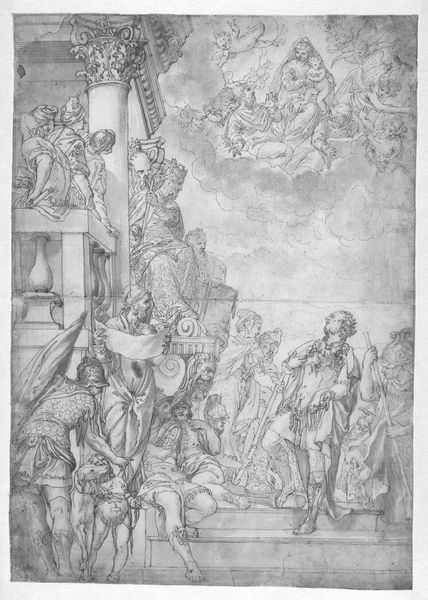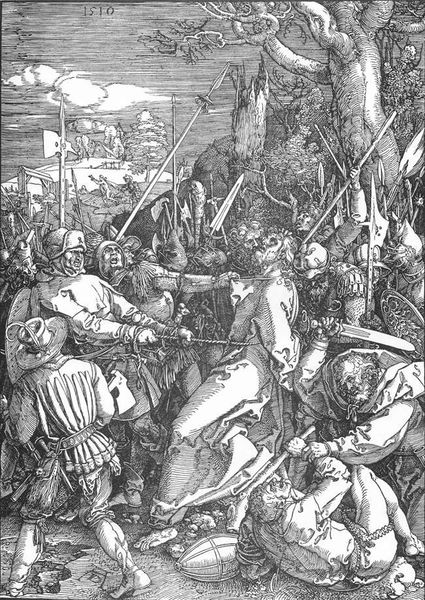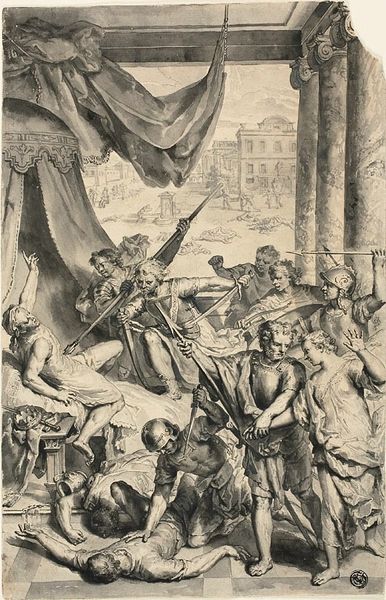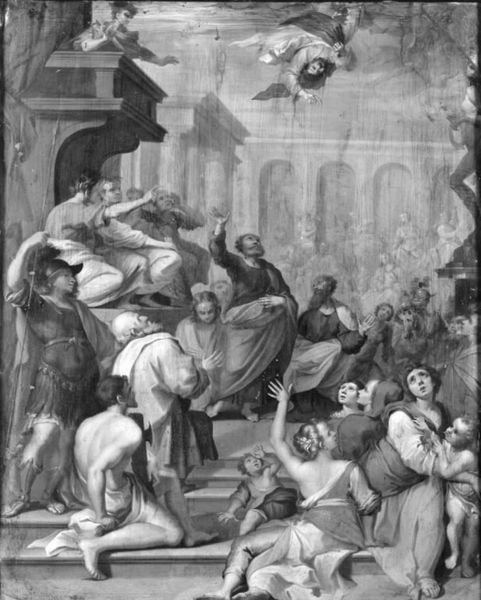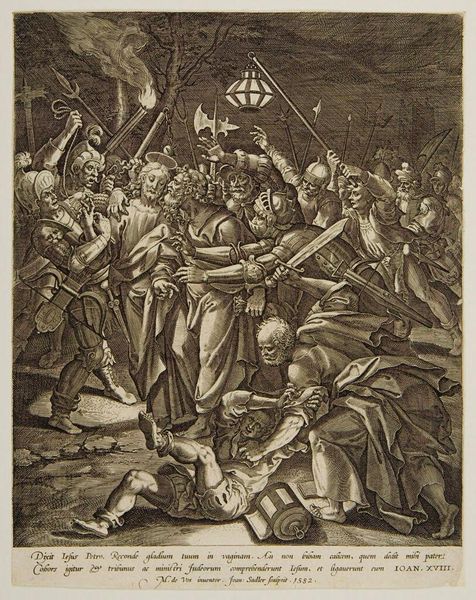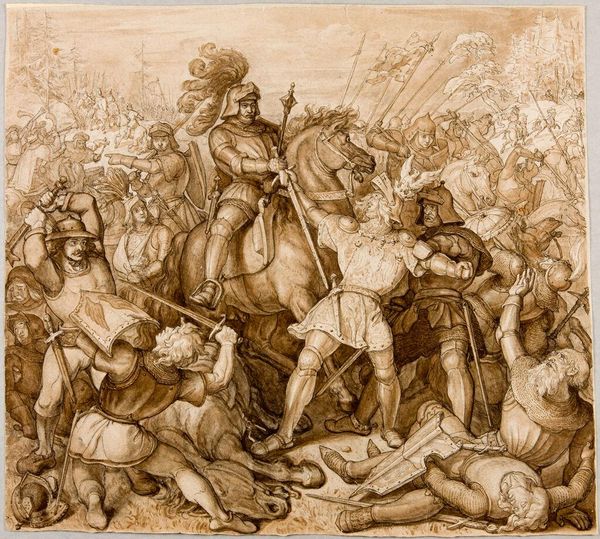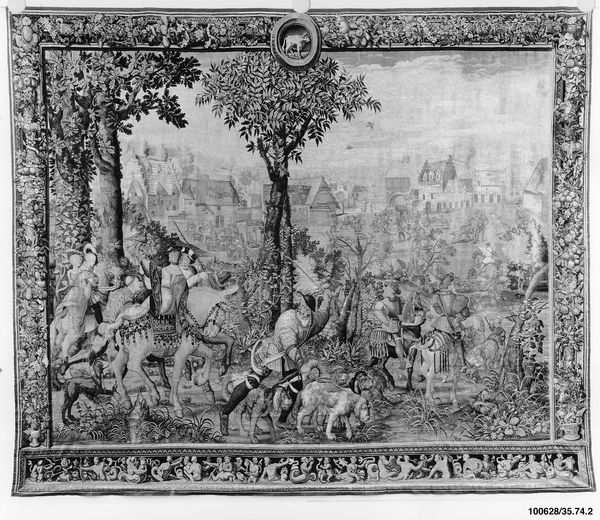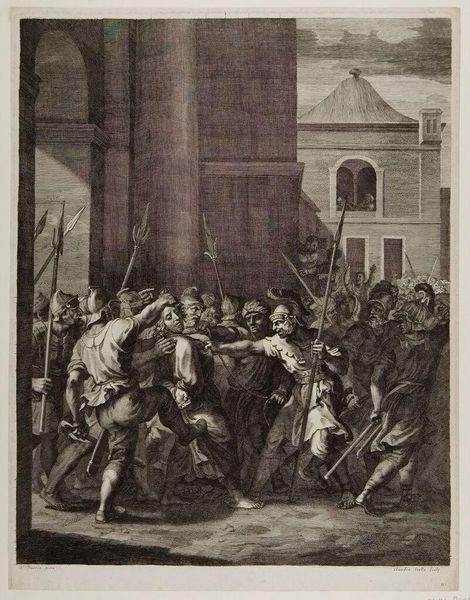
drawing, graphite, charcoal
#
portrait
#
drawing
#
charcoal drawing
#
figuration
#
11_renaissance
#
jesus-christ
#
soldier
#
christianity
#
line
#
graphite
#
charcoal
#
history-painting
#
northern-renaissance
#
monochrome
#
charcoal
#
graphite
#
monochrome
#
christ
Copyright: Public domain
Editor: Okay, next up we have “The Cross of Christ,” a monochrome drawing attributed to Albrecht Dürer. Looking at it, I’m immediately struck by the chaos of the scene. What really stands out is how Christ seems almost swallowed by the crowd. How do you interpret this work? Curator: Dürer's "The Cross of Christ" throws us headfirst into the tumultuous intersection of power, faith, and suffering. Notice how Dürer’s Northern Renaissance sensibilities place this highly emotional, spiritual moment within a contemporary setting. Look closely, and you'll see the guards and the jeering crowd aren't figures from biblical history but rendered as people from Dürer's 16th century Nuremberg. Does that observation give you a new perspective? Editor: It does! It makes it feel much more…immediate. Less like a removed religious event, and more like something happening in real time. I guess that makes the question of responsibility more pointed too. Curator: Precisely. By placing the crucifixion in his contemporary world, Dürer implicates his own society in the narrative of oppression. The charcoal rendering emphasizes the grittiness, the suffering. How does this historical context affect your reading of Christ’s suffering, considering ongoing social justice struggles? Editor: Wow, that’s powerful. Thinking about it that way, it makes me question how historical narratives, particularly religious ones, can be used to both justify and challenge existing power structures. The contemporary rendering is almost like a call to action! Curator: Exactly. It forces us to confront uncomfortable truths about the cyclical nature of injustice and how easily we can become complicit. The art invites crucial dialogues around power, resistance, and the continuous need for empathy and activism. Editor: That is something I hadn’t fully considered when I first saw this drawing. Thank you. Curator: My pleasure. Art's role is to incite inquiry; it is not a dead object.
Comments
No comments
Be the first to comment and join the conversation on the ultimate creative platform.
